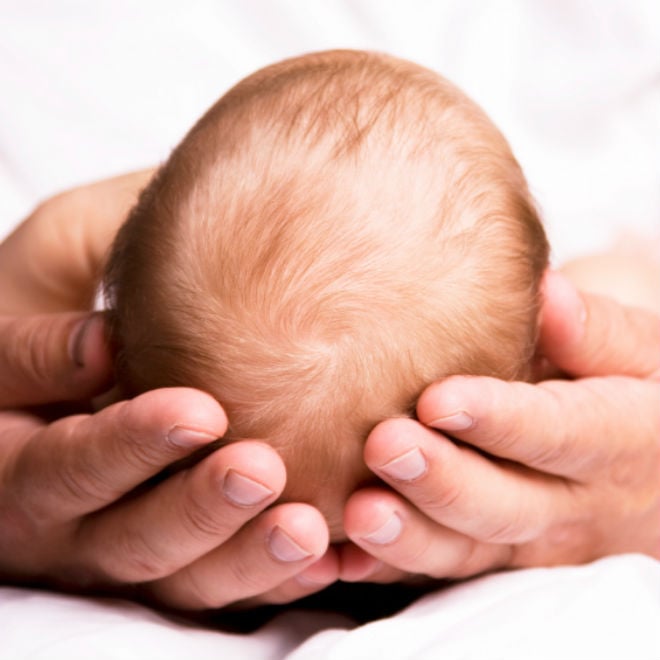What you need to know about newborn cradle cap

Photo: iStockphoto
All three of Shelley McLagan?s children had cradle cap. ?With my first two, my paediatrician said to just leave it alone,? says McLagan. But Nyah, her third, had such a bad case, the doctor recommended she do something about it.
?I poured about a tablespoon of olive oil onto the top of her head and massaged it in a bit. After a while, I combed through her hair with a fine-tooth comb and the flakes literally just lifted off. It was cool and disgusting at the same time. I kept going until most of it was off and then gave her a bath. The oil didn?t fully come out until a few more baths, but the cradle cap was gone for weeks.?
Cradle cap is a very common and harmless condition, says Montreal paediatrician Shirley Blaichman. ?It will often appear in the first one to two months of life and can persist throughout the first year or longer,? she explains. ?Quite often it bothers the parents more than the baby.? Read on for answers to common cradle cap questions.
What is it"
Cradle cap, or seborrheic dermatitis, is a harmless skin condition that usually appears as crusty patches of greasy, yellowish scale on the scalp. It can show up all over the scalp or just in a few patches. Some babies also have scales on their eyebrows or behind their ears, and redness on the forehead or cheeks may be associated with it.
What causes it"
?We don?t really know the cause,? says Blaichman, ?but it tends to occur when there?s an excess of sebum, the waxy substance produ...
| -------------------------------- |
|
|
Finding the Right School with John Catt Educational
31-10-2024 06:53 - (
moms )
Nine reasons to join Year 9 at Millfield
30-10-2024 06:58 - (
moms )













